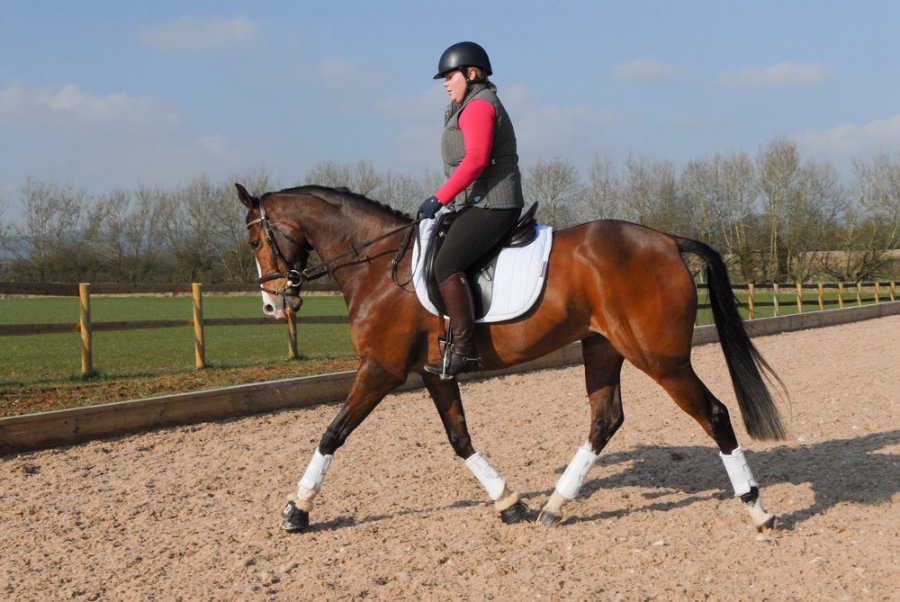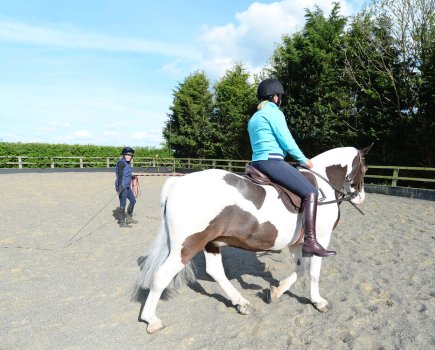A horse that is comfortable in the mouth should willingly stretch into the contact through equally balanced reins. They should be rhythmical and consistent in the contact. Bear in mind that if you, as the rider, don’t feel that you have forward movement and the horse isn’t stretching into the contact, you won’t have the foundation to further your training.
Heather Hyde, founder of Neue Schule bits, shares how you can identify whether your horse is unhappy with his bit and what you can do to find and solve the problem.
Is your horse uncomfortable in their mouth?
If a horse isn’t comfortable in the contact, they will develop ways to evade it, such as:
- They may set their neck and block through the rein. They may overbend and work behind the vertical, or be unwilling to take any weight through the rein.
- They may invert, hollow the back and come above the bit, or they may become resistant when you ask for a downward transition and toss/raise their head.
- They may develop a busy mouth, chomping and chewing and even grabbing the bit and trying to snatch the contact away from you.
- The horse may cross their jaw and totally set against you.
- They may develop tongue evasion, which means pushing down on the bit, putting the tongue out to the side or over the top, or even snatching and pulling the reins (and your hands) down.
- Extreme discomfort could lead to concerning behaviour such as rearing, napping or bolting.
How can you identify the problem?
1 Rule out pain
This is the first and most important point. Issues rooted elsewhere in the anatomy often present through the mouth. First and foremost, get your horse checked by a vet, dentist, physiotherapist, farrier and saddle fitter, and heed their advice.
If you don’t already get your horse’s teeth checked routinely (at least annually, possibly every six months or more often if your vet or quailfied equine dental technician recommends it), you need to start doing so as soon as possible. Ulcers and loose or rotting teeth will be extremely uncomfortable, even without a bit in the horse’s mouth.
2 Remove the bit
Riding bitless may not suit every horse, but for some it can be the making of them. Try riding bitless to see if the problems still occur when the bit isn’t present. When doing this you need to ride in the same frame as when you have a bit, or it won’t be a true comparison.
Some riders may opt to ride without a saddle, which would help to eliminate any issues with the back, saddle and girth, providing you are confident and experienced enough to remain in balance while your horse works. Only try this if it is safe to do so.
3 Alter the noseband
The noseband can have a huge impact yet this is often overlooked by a lot of riders. Changing nosebands is worth trying if your horse appears unhappy in the contact. A narrow headpiece can cause discomfort to the poll, for example, so try more padded or shaped headpieces instead.
4 Enlist the help of a trainer
Having expert eyes on the ground assessing not only how your horse is going, but the way you are riding, is also important as it is possible that the root of your horse’s discomfort is in your hands or the way you ride.
A horse who is ridden with a short, restrictive contact, for example, can’t truly work forwards and may start looking for ways to evade the contact. Or perhaps you are inclined to lean to one side or lose balance during transitions — what you are doing in the saddle is key to how well your horse is able to work beneath you.
What if the problem really is in the mouth?
If you conclude the issue is within the mouth, thoroughly check all of the flesh. Rubs inside or outside the lips and cheeks are common. If there is any damage, don’t use a bit until it is fully healed and then a change of bit may be necessary.
Check the tongue for damage and the bars of the mouth for bruising too. We recommend you check your horse’s mouth daily, much like you do the feet, so you’ll know if anything is different.
If there is still nothing to be seen, it could be worth having the mouth X-rayed. Even the best dentist won’t be able to see shards or roots of teeth under the gum line without diagnostic procedures. Speak to your vet for advice.
Meet the expert: Heather Hyde is the founder of Neue Schule Bits and has been involved in assessing the needs of horses and their riders for many years. For more information, visit nsbits.com









